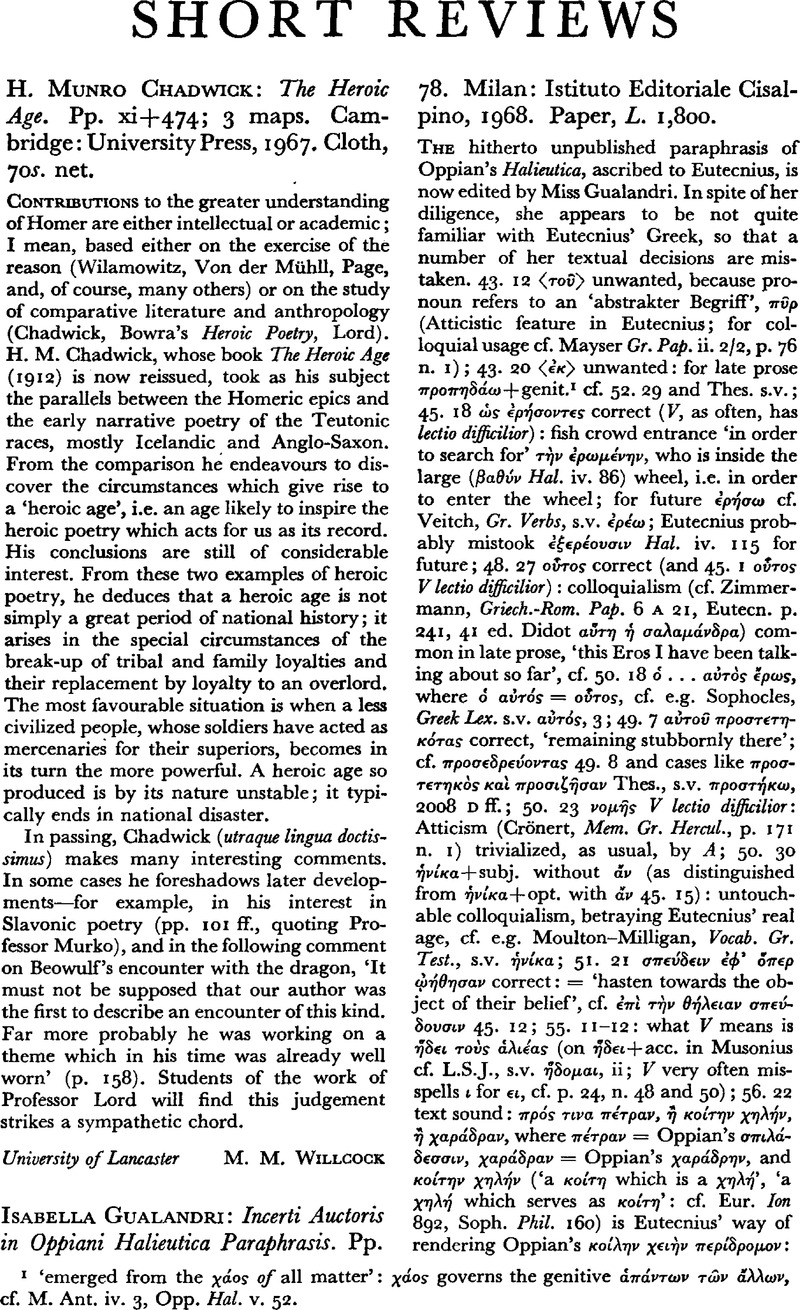No CrossRef data available.
Published online by Cambridge University Press: 27 February 2009

page 236 note 1 ‘emerged from the χάος of all matter’: cf. M. Ant. iv. 3, Opp. Hal. v. 52.
page 237 note 1 On the ‘Schwanken zwischen -ιδι, -ιει’, typical of ‘Neujonisch’ cf. e.g. Kühner-Blass i, p. 446. Nothing authorizes Miss Gualandri to change βουβάλει of V into βούβαλι.
page 137 note 2 He uses ἐπισκἐπτομαι at 72. 5 and 11: all three possible variations (ἐπ¹σκοπέω, ἐπ¹σκοπεύω, ἐπ¹σκέπτομαι) are therefore utilized by him.
page 237 note 3 On such syntactical ‘disparates’, typical of late authors, cf. Jannaris, , Hist. Gr. Gramm, §§ 779, 1991.Google Scholar
page 137 note 4 In sum: the original ΗΔϒ was itacistically misspelt ΗΔΙ; ΗΔΙ was, of course, taken to mean ΗΔΕΙ, so that ἤδει τοὺς ἁλιέας was born. Miss Gualandri misunderstands the whole process, as is evident from her discussion on p. 26.
page 137 note 5 A beautiful example in Steffens, Probengriech. Hss., Tafel 5, col. 2, line 8.